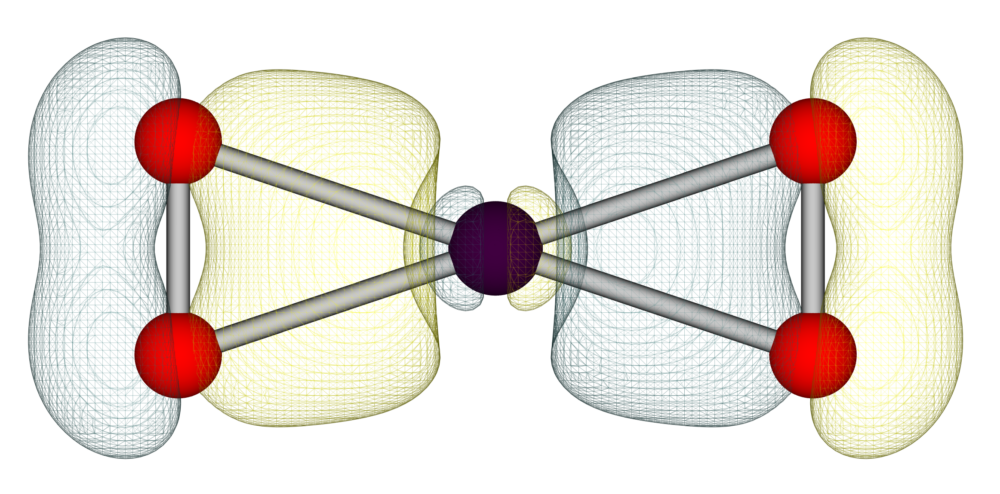My classical research field is Computational Inorganic Chemistry. I specialise in the application of electronic structure methods (Density Functional and Wavefunction approaches) to understand chemical transformations at the molecular level.
The focus has been on making new inroads in the design of catalysts for sustainable energy production, the creation of novel chemical species with desirable properties, or to understand the origin of electronic properties such as magnetic bistability in transition metal complexes.
Computational chemistry is eclectic and I have made forays into photo- and electro-chemistry, gas phase chemistry, heterogeneous catalysis, homogeneous catalysis, magnetochemistry and spectroscopy.
Check out my Researchgate page for a detailed view of my published work.
Present Address:
BioISI – Biosystems & Integrative Sciences Institute;
8.5.53 – C8, Faculdade de Ciências da Universidade de Lisboa
Campo Grande- 1749-016 Lisboa Portugal
Phone: +351 21 750 01 09
http://www.researcherid.com/rid/B-6399-2012
http://orcid.org/0000-0002-5754-7328
http://www.cienciavitae.pt/pt/4A19-ACC3-E225
Here are some nice figures related to my work:

Reaction profile of Ammonia activation with Mezdek’s complex: [Mo(NH3)(Phtbpy)(PPh2Me)2]+ from ChemistrySelect 2017, 2, 11071.

Intermetallic molybdenum bond taken from the hydrogen reduction catalyst [Mo2O2(μ-S)2(S2)2]2+.
Present Research interests:
The key actions which I am currently pursuing or intend to pursue in association with experimental partners are the following:
1) Life sciences (e.g. biomimetic chemistry, enzyme action)
2) Environmental custodianship (CO2 activation and storage; molecular metal oxides as environmentally friendly catalysts; actinide chemistry)
3) New materials for IT (magnetic switching, data storage).
Keywords: Density Functional Theory; Multi-configurational Self-consistent Field; Difference Dedicated Configuration Interaction (DDCI); Polyoxometalates; Group 6 oxides; Magnetic Interactions; Lanthanides; Actinides; Transition Metal Chemistry.
Representative publications (by area) :
Magnetism
• Bandeira, N. A. G., Maynau, D., Robert, V., & Le Guennic, B. “Do π–π Stacking Interactions Really Play a Role in the Magnetic Coupling Mechanisms of [Cu2(μ2-CH3COO)2L2(H2O)2]n+ (L = heterocyclic base, n = 0, 2) Complexes? An ab initio Inspection.” Inorg. Chem. 2013, 52(14), 7980-7986. doi: https://dx.doi.org/10.1021/ic400517z
• Bandeira, N. A. G., Sadeghi, O., Woods, T. J., Zhang, Y.-Z., Schnack, J., Dunbar, K., Nyman, M., & Bo, C. “Magneto-Structural Analysis of Iron(III) Keggin Polyoxometalates.” J. Phys. Chem. A, 2017, 121(6), 1310-1318. doi: https://dx.doi.org/10.1021/acs.jpca.6b10763
Chemical Reactivity
• Bandeira, N. A. G., Garai, S., Müller, A., & Bo, C. “Mechanism of CO2 Hydration: Porous Metal Oxide Nanocapsule Catalyst Can Mimic the Biological Carbonic Anhydrase Role.” Chem. Commun., 2015, 51, 15596-15599. doi: https://dx.doi.org/10.1039/c5cc06423f
• Bandeira, N. A. G., & Bo, C. “Regioselective Catalysis by the {Mo132} nanocapsule: A computational inspection.” Eur. J. Inorg. Chem. ; 2018,(22),2512-2517; doi: https://dx.doi.org/10.1002/ejic.201800155
• Bandeira, N. A. G., Veiros, L. F., & Bo, C. “Hydrogen Generation via Activation of X-H Bonds in Ammonia and Water by an MoI Complex.” ChemistrySelect, 2017, 2(34), 11071-11082; doi: https://dx.doi.org/10.1002/slct.201701801
Energy alternatives & sustainability
• McAllister, J., Bandeira, N. A. G., McGlynn, J. C., Ganin, A. Y., Song, Y.-F., Bo, C., & Miras, H. N. “Tuning and mechanistic insights of metal chalcogenide molecular catalysts for the hydrogen-evolution reaction.” Nature Commun. 2019,10(1),370 ; doi : https://dx.doi.org/10.1038/s41467-018-08208-4
